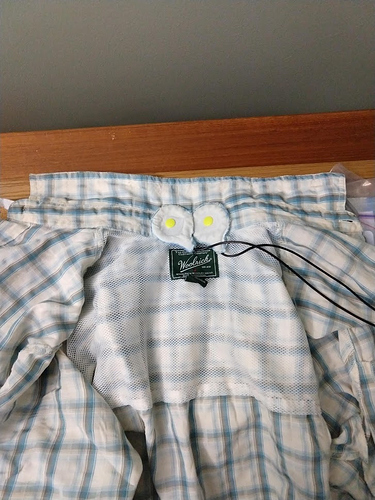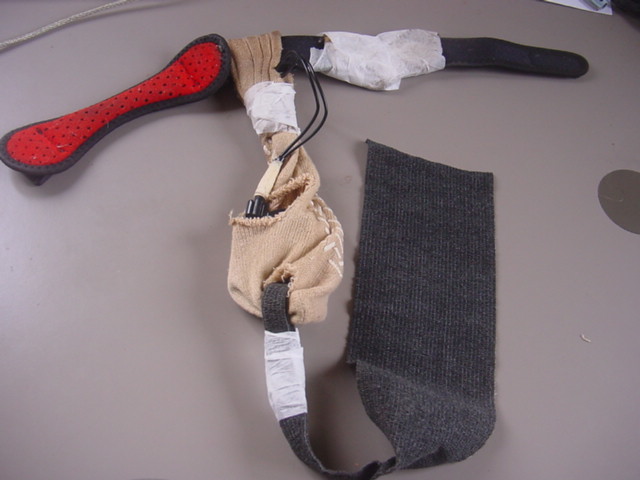I’ve had my C5 since June '19 but got waylaid by a neurologist at Johns Hopkins who suspected I might have a motor neuron disease, specifically ALS which took my mother. After much genetic testing I was told it was 'very unlikely’ but no other helpful advice except for disc replacement at C3-C7 requiring cervical spine fusion.
The muscle atrophy of my left shoulder and left biceps has been progressing since 2016 but there was no pain until Fall 2019. I had been discouraged by the prospect of trying a C5 protocol for 6 months and seeing no result, and having to decide to try longer or try another protocol, but I finally decided to try Omni 8 at Level 8-10, taped coils to the back and front of my shoulder, ran it while I slept, and most of the pain which had been slowly increasing was 80-90% gone in 2-3 days. I didn’t know if the pain signals were being masked or if actual repair was happening, but I stopped for about a week and the pain was still gone.
I started doing physical therapy recently and I’ve had some intermittent shoulder pain, possibly due to over-exertion, or further deterioration. The muscle atrophy was initially diagnosed as degenerating intervertebral discs pressing on my spinal cord but was more recently diagnosed as cervical radiculopathy, the discs pushing on individual nerves as they exit the spinal cord and pass horizontally through the foraminal passageways in the vertebrae on their path to the upper body. Disc replacement would again require spine fusion.
I also consulted with Dr.P in MD, and he said I would probably need an $8K-$15K machine to reach into my spine which would be a financial hardship.
So I’m going to try my C5 on my spine to see if the nerve impingement can be reduced. I also consulted with a chiropractor who uses a Pulse Pro XL, a $30K machine touted as being the most powerful PEMF system available, and it did make my entire body twitch, but then I read your response to 57yarder’s questions about treating spasticity, nerve and muscle damage where you said that more intensity is not necessarily better, and to try turning it down and/or shorter treatment sessions.
So here are my questions for anybody who has had success treating a similar condition anywhere on the spine, or nerve damage anywhere:
- Is ICES actually different from ‘traditional’ PEMF, which is presumably what Pulse and similar systems use? Apparently the Pulse transmits over 1000 Gauss, but is it possible to compare the two technologies?
- Would you still suggest trying Omni8, Schumann 4, and Alpha wave? Does habituation of cell response to a fixed frequency still seem to be a possibility?
- Would you suggest I use my 2x2 arrays, singly or stacked on my spine, and does the orientation matter? The 2x2 will fit my spine more easily in a ‘diamond’ orientation with one coil on top, two horizontally in the middle and one on the bottom.
- Or use one 2x2 on the back of my neck and one on the front? Or would you suggest your new Deep Field Coils, and if so, oriented across my spine? Ideally I would treat disc impingement from C3 to C7, but I may have to alternately treat at 2-3 positions.
Part of my challenge is the difficulty of keeping the coils in place as I toss and turn while sleeping. I initially used masking tape to affix the single coils to a tight t-shirt covered by another shirt which worked but it’s time-consuming to remove and replace the coils to wash the shirt. I’m now experimenting with using plastic snaps to create cloth pockets on a shirt which can be unsnapped to remove the coils. Keeping the coils on my neck will be more challenging.
I’m also starting testing with my Brain Gauge, as one spine surgeon suggested I could have some sort of brain disfunction. Seems unlikely but my brain could use some improvement, especially stress/cortisol reduction.
Thank you for your interest and patience to help folks heal themselves at a very reasonable price!

 ) Worth a look but might be a dead end…
) Worth a look but might be a dead end… cooler weather the sock can go inside a shirt which prevents “flopping” and if perspiration is a problem the sock could go into a plastic bag secured with a twist tie. I leave this on 24X7 for several days at a time. I also have another arrangement for my lower back that I leave on 24X7 and a third that I leave on my knee, so I alternate between the three. All three are left with the coils taped in place and with strain relief taken care of by the tape.
cooler weather the sock can go inside a shirt which prevents “flopping” and if perspiration is a problem the sock could go into a plastic bag secured with a twist tie. I leave this on 24X7 for several days at a time. I also have another arrangement for my lower back that I leave on 24X7 and a third that I leave on my knee, so I alternate between the three. All three are left with the coils taped in place and with strain relief taken care of by the tape.